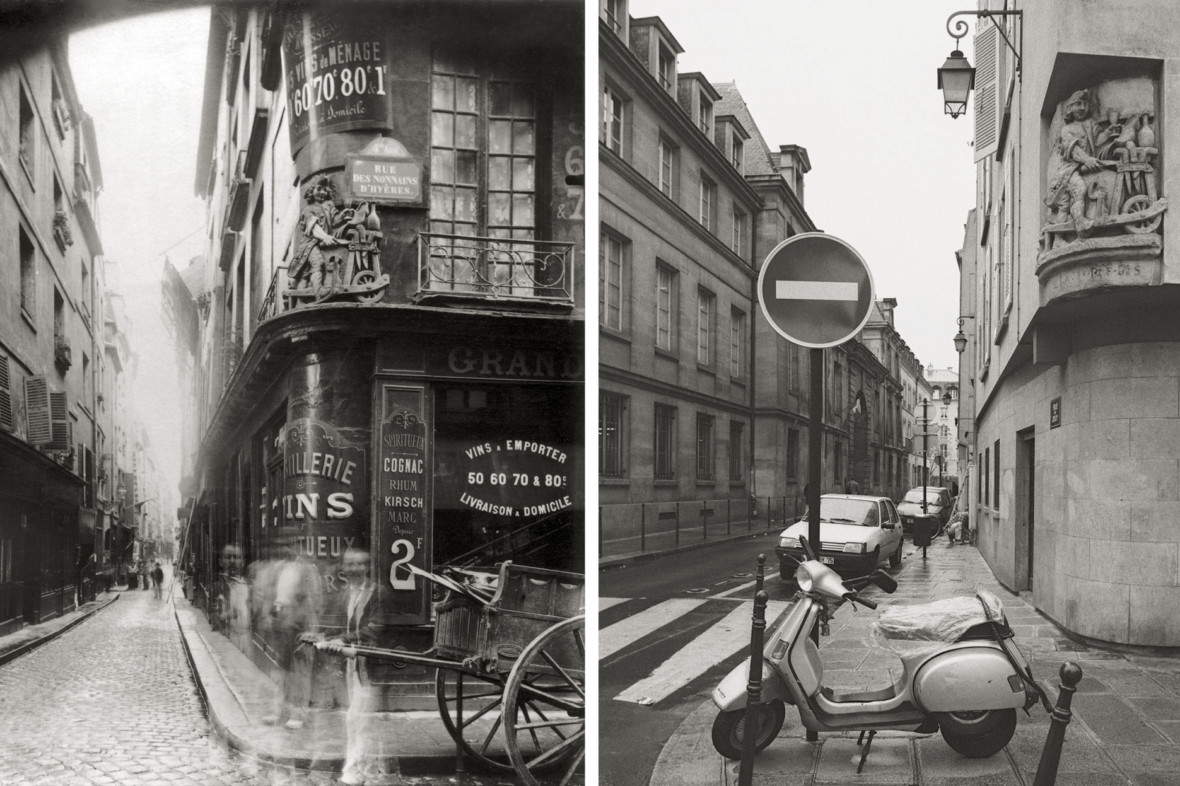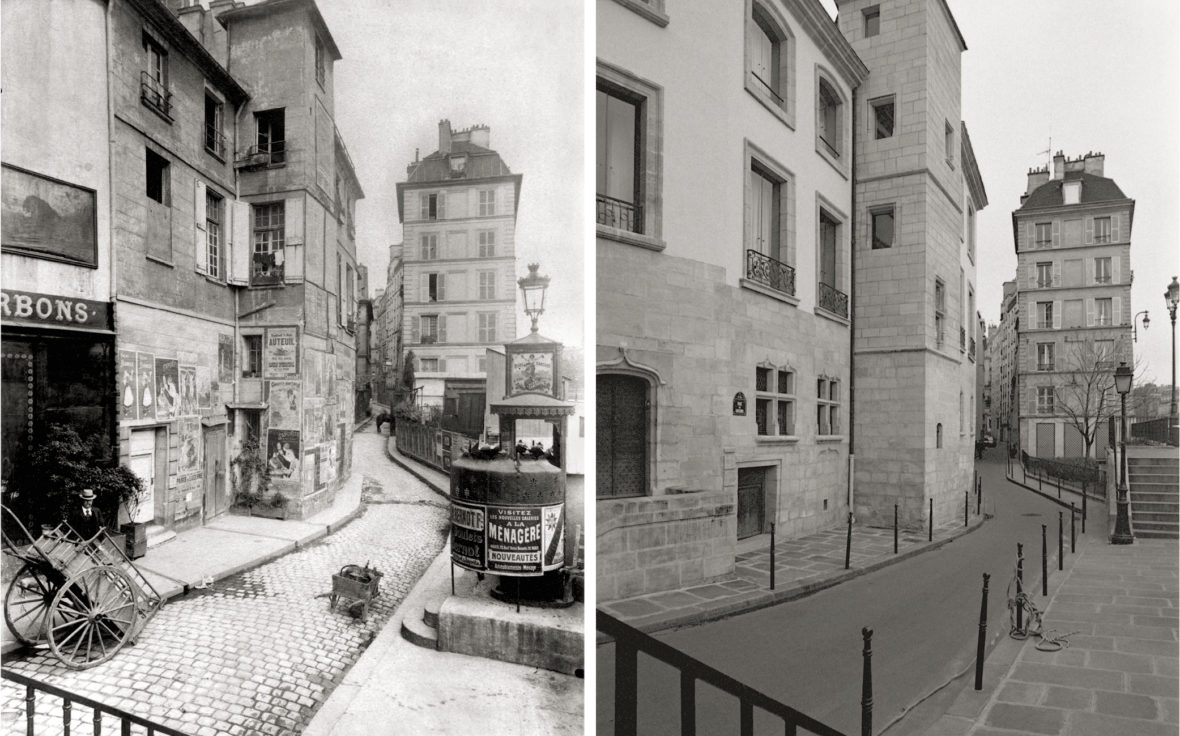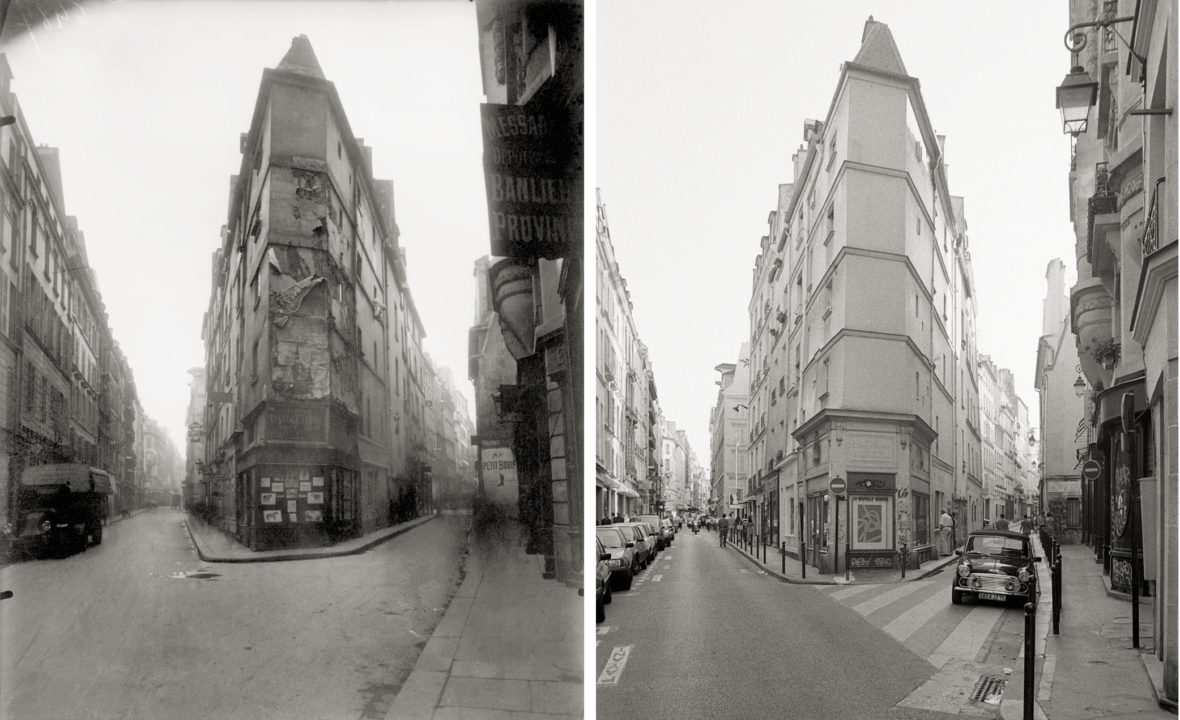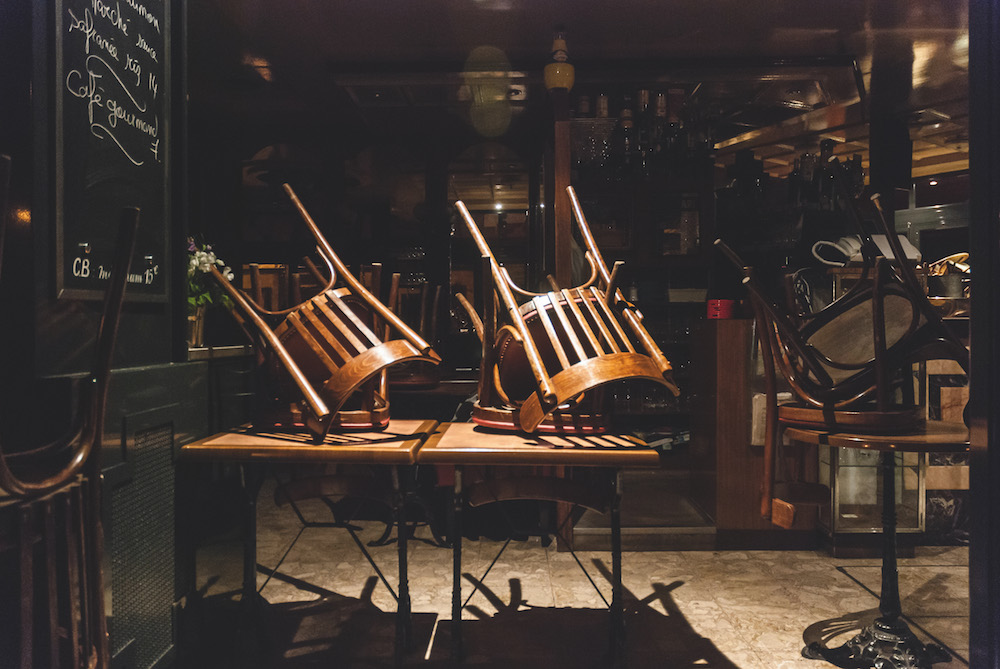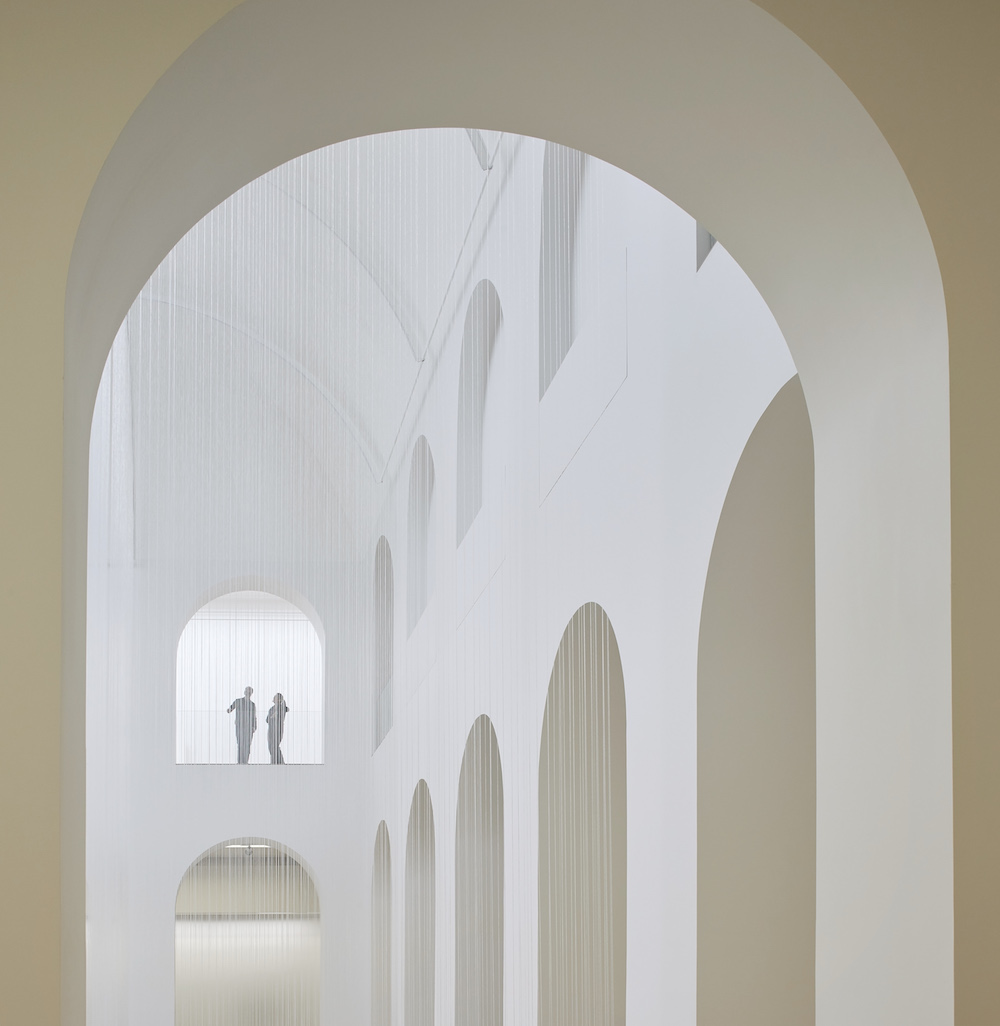Franco-American painter Jules de Balincourt ruminates on abstraction, utopia and the accessibility of art, at the opening of his latest exhibition
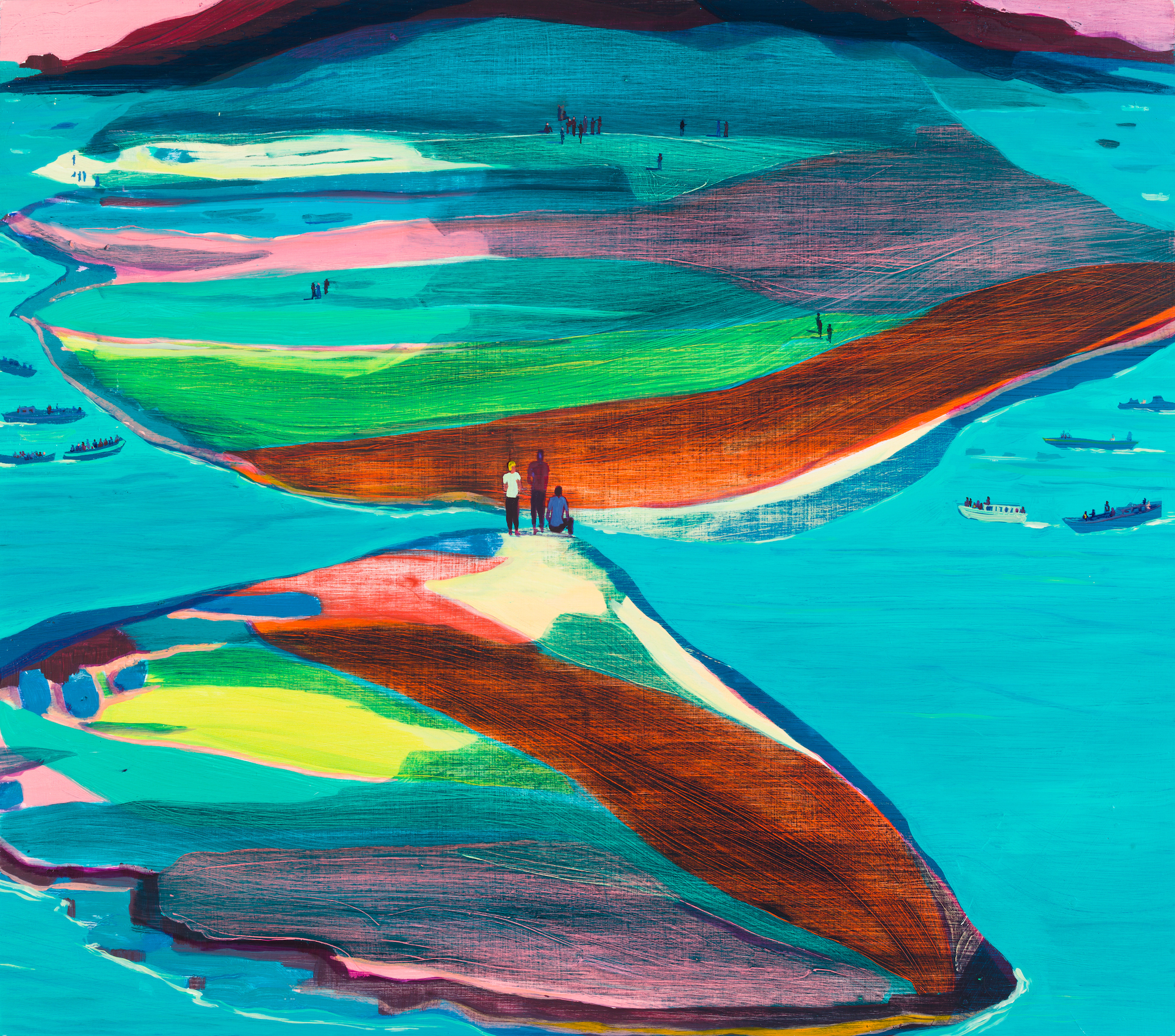
If contemporary art is frequently found to be conceptually obscure, exasperatingly self-referential or weighed down with lofty ideals, then the vibrant works of Brooklyn-based artist Jules de Balincourt may be just the antidote. With nothing more new-age than oil on panel, he has produced paintings that project a powerful radiance from within an abstracted haze. Imposing landscapes inhabited by roaming communities, each work is arrestingly aestheticised in a way another artist might find beneath them, but De Balincourt owns it. “Art for me, it always was about beauty and seduction at a certain level, the first thing that draws you to art is to be pulled into it, seduced by it.” He hurriedly adds, “but it can’t just be sugar-coated sweetness, I need an edge or tension or… I like the idea of these paintings standing at a crossroad where it could go either way. I like to leave that suspense.”
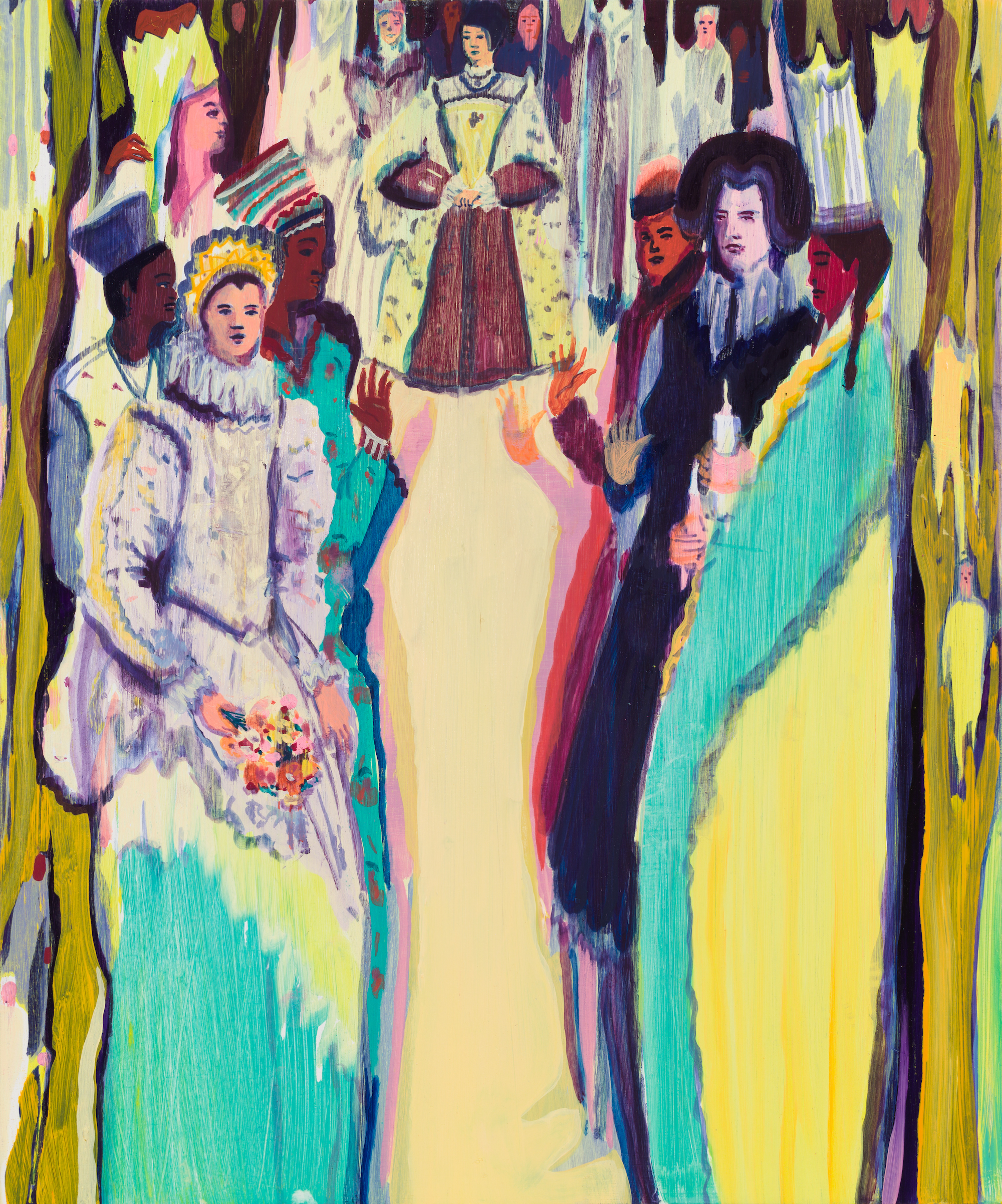
De Balincourt was born in Paris, although from the age of nine he was raised in Malibou Lake, California. He has stated in interviews that he doesn’t identify as either entirely French or American, although with France recently voting in Macron over the far-right, populist Le Pen, it is clear that his mind is very much focused on the troubled and divided times facing the United States. It is almost a year since Trump’s inauguration when I meet him at the installation of his new show, They Cast Long Shadows, at Victoria Miro in Mayfair. Perched on stools in the main gallery, we are surrounded by these new works, and he gesticulates energetically whenever he seeks a point of reference.
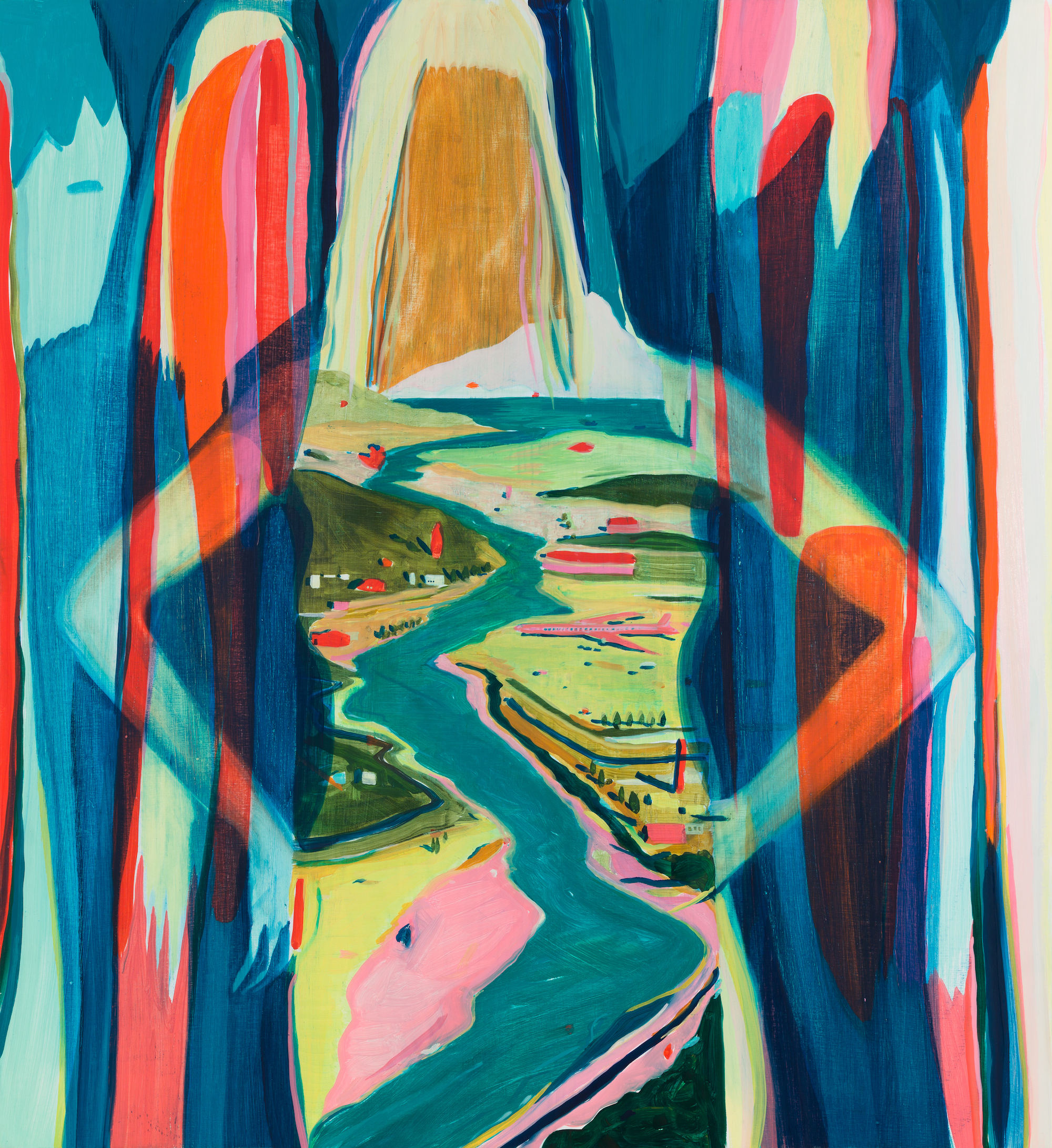
The show is an accumulation of activity from only the past few months, although this is in fact an arbitrary marker. “It’s just a continuation of what I’ve always done in some ways. There’s never a big drastic shift… I consider each show like another page in the same book.” De Balincourt is very precise about his process, if only to articulate its imprecision. Each painting is begun in abstract until, floating in the brushstrokes, “I find something to grasp onto and it eventually becomes figures.” These little populations in turn create a landscape from the floating impressionistic forms by transforming their surroundings into a coherent space. It is unplanned and instinctive, and de Balincourt eschews the use of photography or preliminary sketches. “I’m always working intuitively and unconsciously, I’m interested in my own self-discovery through making this work.”
This approach has informed the show’s installation process too, “I’m interested in the free-associative elements that come up when two completely different images are juxtaposed but I know they still somehow relate.” For all their chance origins, De Balincourt’s landscapes are highly expressive and their metaphorical power leaves them steeped in narrative potential.
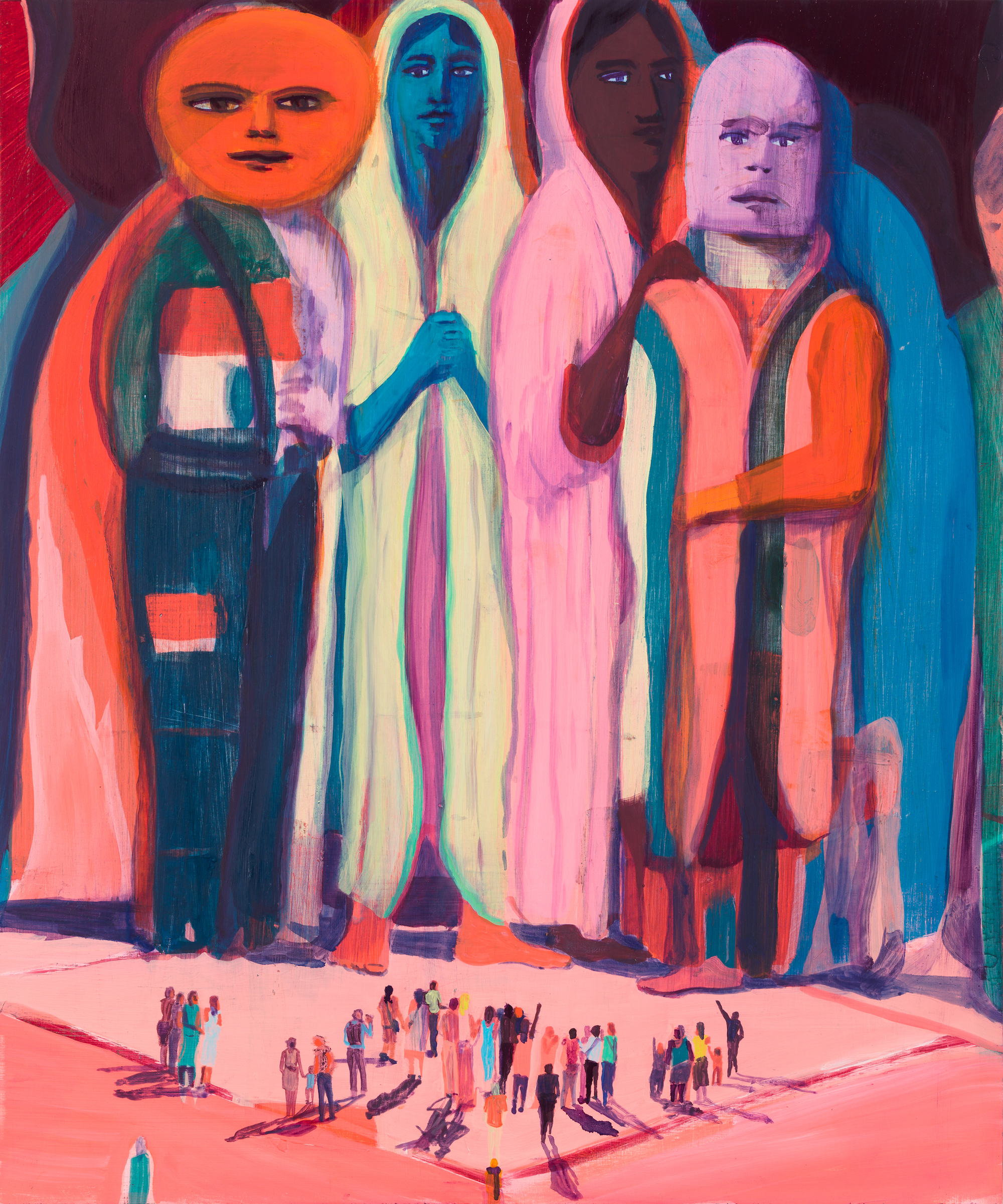
The island, a recurrent motif for the artist, who is also a keen surfer, has unfixed and shifting applications. In Island People the pastel pink island is an ‘Edenic comfort zone’ or a sanctuary where people freely congregate. In Divided Island, however, a gathering perches on one island and stares across a channel to another larger land mass that recedes into the distance. It speaks of islands that are insular and isolating with a resonance that is at once timeless and timely, as de Balincourt confirms – “it’s a subtle jab at Brexit”.
His work has long toyed with a tension between the utopian and dystopian, although he admits, “I think my work, when I was younger, was a little bit more direct. Now I push myself to delve more into the unconscious, the abstract, the intuitive and see what comes up.” This is inevitably influenced by real world events, which have recently loomed in the minds of many. “The real challenge under the Trump administration is how to confront the current situation at all… I don’t really know how to address it directly but I know that subconsciously I am concerned about what’s happening in America.”
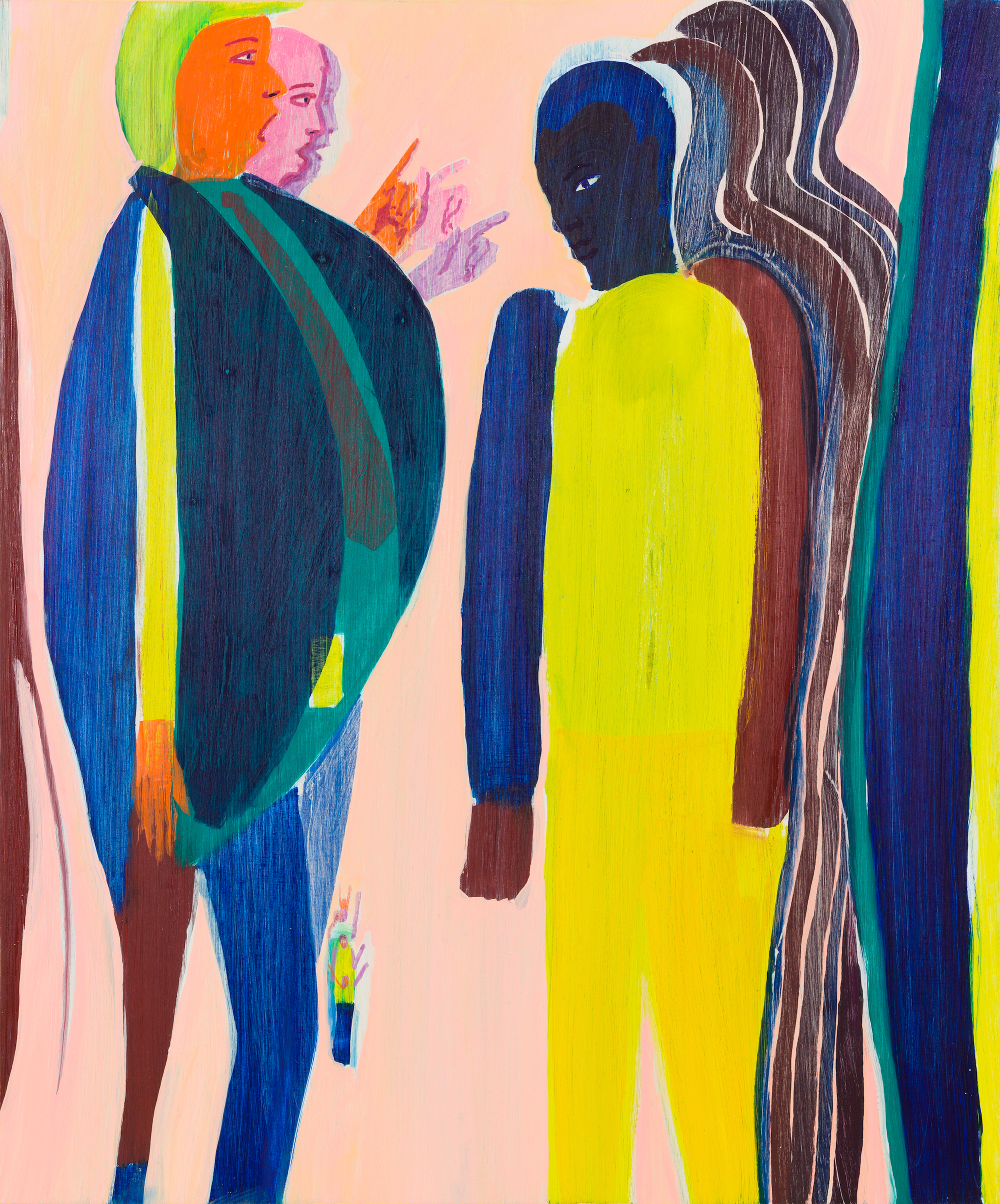
In his recent move towards greater abstraction, de Balincourt has found avenues to address those issues. Even the most obvious work, Repeated Histories, in which a robust orange-faced man directs a small accusatory finger towards a row of black men, makes use of abstracting techniques such as repetition and distorted scale to reflect real power structures. Other works in the collection take a softer approach, and one that is distinctly undogmatic. The art is deliberately accessible, with de Balincourt entirely unconvinced by the social or political impact of art that he considers “convoluted and hyper-conceptual… completely wrapped up in a hermetically sealed corner of the art world. My work is in a weird way a resistance to that pretentiousness and elitism,” he stares intently at a canvas across the room before turning to me with a grin, “but then again, you know, I’m starting to sound like a Trump supporter.”
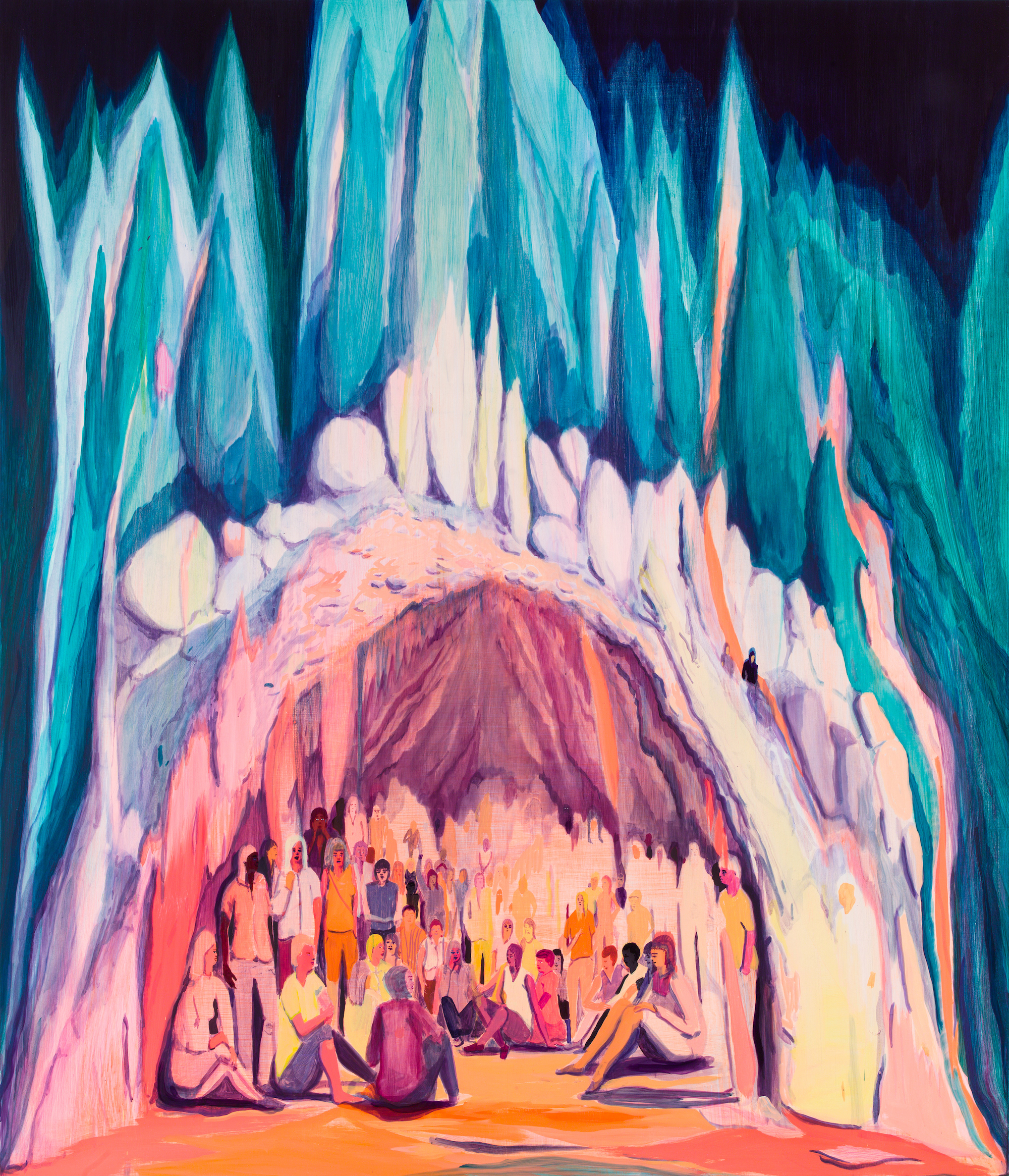
De Balincourt’s work seems simple, yet strikes to the core of a complex conversation. In these dreamy worlds, at least, the utopian defeats the dystopian and de Balincourt announces, “I wanted to be optimistic. I wanted to still give hope.” At one point he gestures towards Cave Country, a large canvas in which a deep crevasse of hot oranges and warm pink cuts into a turquoise rock to house a crowd seeking refuge. He pauses carefully before declaring, “I like to think of it as a place away from the chaos of the rest of the world.”
They Cast Long Shadows is at the Victoria Miro Gallery until 24 March 2018.
